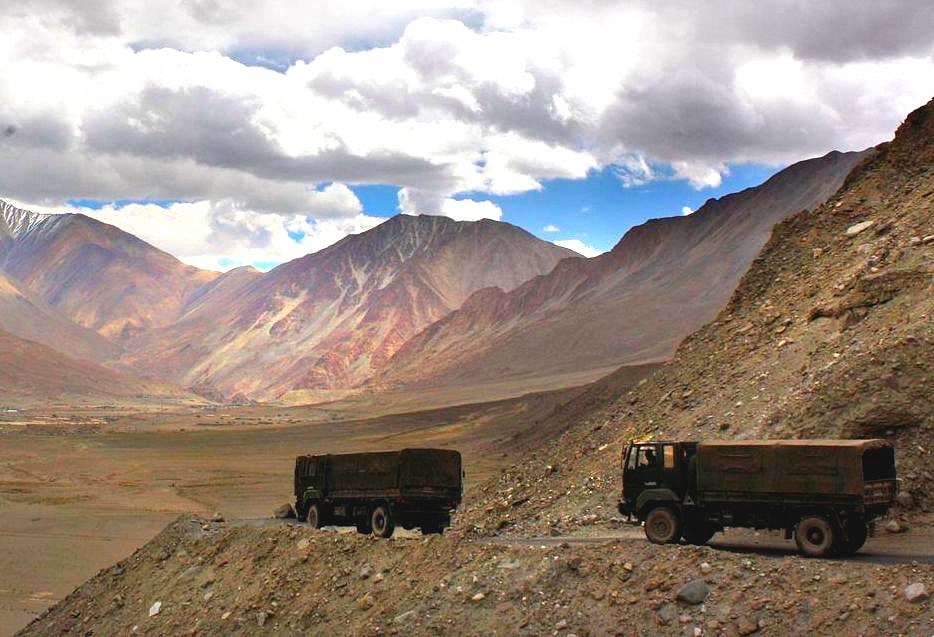News Brief
China Spooked By India’s Occupation Of Heights South Of Pangong Lake, Building New Road To Mitigate Threat From Indian Army
- Why China is working on a new road south of the Pangong Lake in Ladakh.

An Indian army convoy in the Himalayas
On the intervening night of 29 and 30 August, Indian soldiers had captured heights in the Chushul sub-sector near the Spanggur Lake.
Being in control of these heights, overlooking the Spanggur Gap and the Chinese positions in the area, give India a significant advantage.
The new Chinese road, which is coming up at some distance from the heights occupied by India, is being built to mitigate threats from India.
The existing Chinese road along the southern shore of the Spanggur Lake, which links PLA positions in this area to the Tibet-Xinjiang Highway, is vulnerable to attacks from the Indian Army troops on the Rezang-La-Rechin La ridgeline.
The new road will also help China to avoid reconnaissance.
The occupation of heights by India in the area has given New Delhi a bargaining chip to negotiate for China’s withdrawal in the ongoing military talks.
With India occupying positions on heights both north and south of the Spanggur Gap, its ability to thwart a Chinese attempt to ingress through the gap has increased significantly.
Fully armed Indian troops sitting on these heights atop the ridgeline, including those overlooking the Spanggur Gap, can not only monitor movements of the Chinese forces deployed in the larger area south of the Pangong Lake, but also dominate a number of PLA camps and positions in the area.
Introducing ElectionsHQ + 50 Ground Reports Project
The 2024 elections might seem easy to guess, but there are some important questions that shouldn't be missed.
Do freebies still sway voters? Do people prioritise infrastructure when voting? How will Punjab vote?
The answers to these questions provide great insights into where we, as a country, are headed in the years to come.
Swarajya is starting a project with an aim to do 50 solid ground stories and a smart commentary service on WhatsApp, a one-of-a-kind. We'd love your support during this election season.
Click below to contribute.
Latest